Discover Tahiti’s secret paradise: Taha’a, the ‘vanilla island’
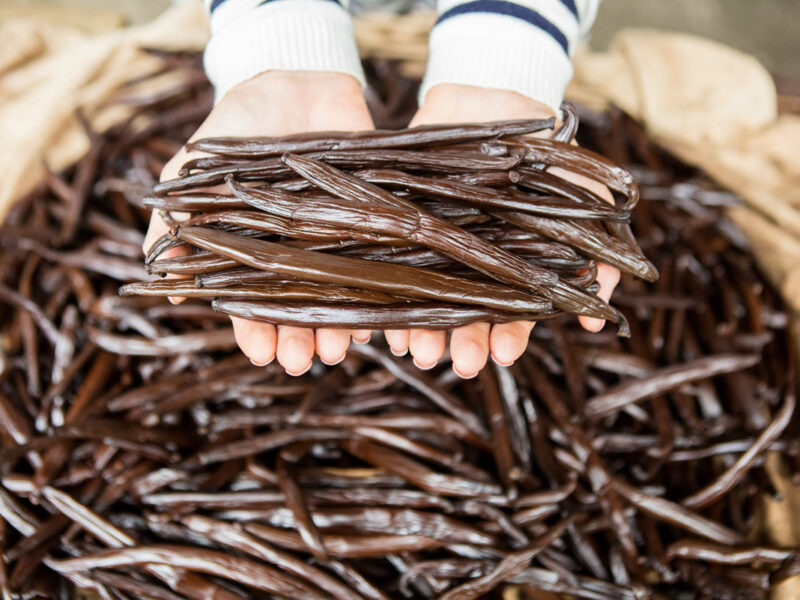
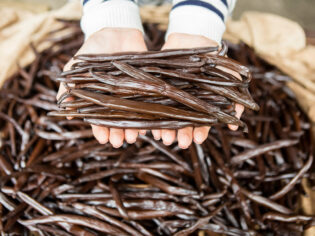
Taha’a is the vanilla capital of the world. (Image: Tahiti Tourisme and Grégoire Le Bacon)
The small island of Taha’a sits in the shadow of its well-known neighbour, Bora Bora, yet has all the beauty and none of the crowds.
Let me tell you a story about the birds and the bees. Except, crucially, in this story, there are no bees. It’s about a swift impregnation that needs to take place within a window of just a few hours, between daybreak and noon, to birth a beautiful, glossy vanilla pod on the Tahitian island of Taha’a, aptly known as ‘the vanilla island’ – reached via a 45-minute flight from Tahiti to the island of Ra’iātea, then a 10-minute boat ride across the lagoon.
The vanilla capital of the world
Vanilla is seen growing all over Taha’a – from large farms (some of which you can visit) to small backyard plantations. Here are some quick facts about vanilla on Taha’a.
- Imported to French Polynesia: 1848 (from the Philippines) and 1874 (from Mexico)
- Harvest period: July to November
- Annual production: ~20 tonnes (down from 200 tonnes in the 1940s)
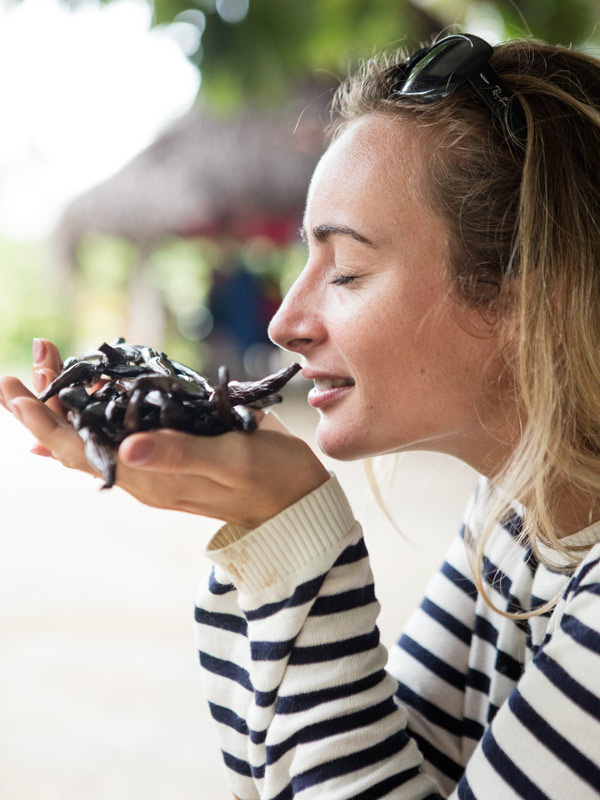
Vanilla is seen growing all over Taha’a. (Image: Tahiti Tourisme and Grégoire Le Bacon)
When introduced, the vines enjoyed the climate of their new home and thrived in Taha’a’s volcanic soil, but unfortunately, the bees used to pollinate the flowers in Mexico weren’t so enamoured by their new environment. This left farmers having to assume the role of the bees, working quickly and gently to transfer pollen to the flowers’ stigma between July and November.
You could say it’s worth the labour of love, as Taha’a is said to produce some of the most fragrant and sizeable vanilla pods in the world. The pods are valued for their scarcity with the number likely to dip further, given the younger generation doesn’t seem particularly keen on racing up and down at first light to help high-maintenance vanilla flowers copulate. The way of the world, it seems.
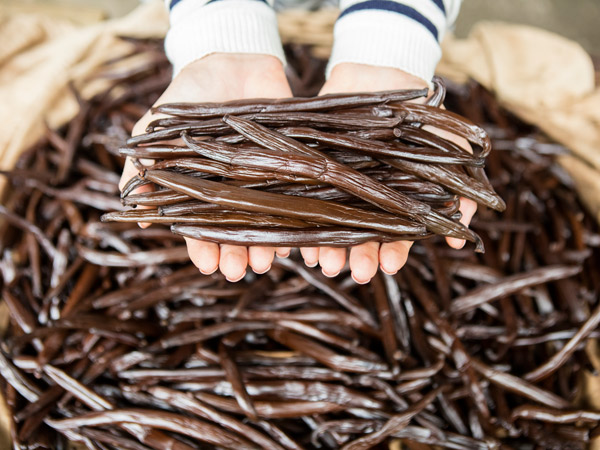
Taha’a is said to produce some of the most fragrant and sizeable vanilla pods in the world. (Image: Tahiti Tourisme and Grégoire Le Bacon)
For now, however, Taha’a still has a country-town feel. It’s an island that very much espouses island time – there’s no hurry, no worries, and the community of 5000 people is tight-knit. “Do you know everyone on the island?” I ask our 4WD safari guide, Hiti Qui, who waves to every car and bike we pass as we make our way around the island’s 70-kilometre, flower-shaped perimeter. “Yes,” he responds matter of factly, returning a wave to a man just offshore in an outrigger canoe.
Taha’a neighbours Bora Bora, but unlike its famous cousin, it flies under the radar, despite being surrounded by the same postcard-ready turquoise water. It seems only the French (i.e. the European kind, given all French Polynesians are French citizens) are clued into its beauty, making up the vast majority of tourists. We certainly don’t see any other Aussies, and both staff and fellow travellers seem genuinely surprised when we start speaking English (bar our few broken phrases in French).
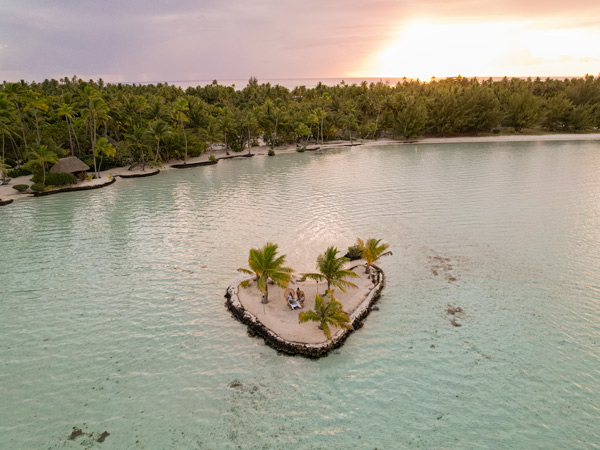
Taha’a is severely underrated. (Image: Grégoire Le Bacon)
Rum, pearls and adventure
It’s not just vanilla that defines Taha’a. Dive into the island’s other famous exports: rum and Tahitian black pearls.
A number of French Europeans have been drawn to the island more permanently, including Olivier Duret, who set up a rum distillery (with dark rum aged in French oak barrels, of course), capitalising on the island’s plentiful sugar cane. Our safari with Hiti includes a rum and gin tasting in the rustic, sand-floor shack, then a trip to a pearl farm to learn more about another major driver of French Polynesia’s economy – the prized Tahitian black pearl.
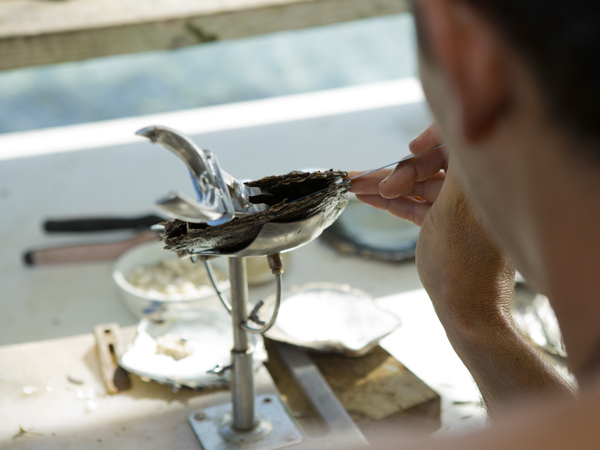
Tahitian black pearls are important for French Polynesia’s economy.
After a short demonstration of the cultured pearl process, introduced in French Polynesia in 1961, we meet the owner of Love Here Pearl Farm, Alfred Marten, as he sits by the water, plucking pearls from a white cloth bag one by one and carefully rolling them between his fingers. He examines their size, shape and imperfections, before placing them in lettered grading trays, with ‘A’ being the highest quality.
“Less than five per cent are top quality,” he says of the 200,000 pearls his farm harvests per year (which take about five hours per day to grade – lucky he’s got a nice spot by the water). And that five per cent fetches a high price, though lower grades can also be beautiful, and the farm will custom-make jewellery if you find a pearl you like.
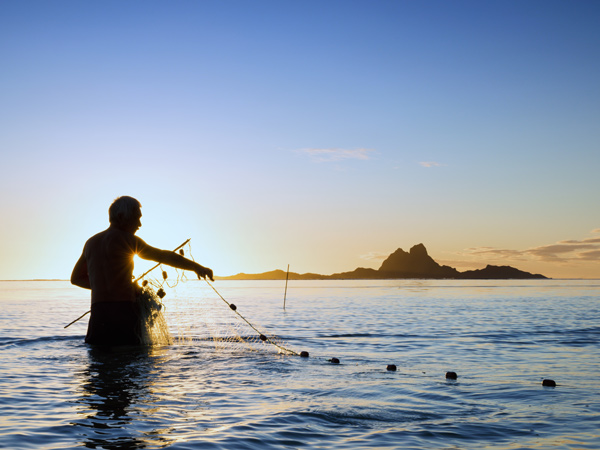
Less than five per cent of pearls are top quality. (Image: Stephane Mailion Photography)
Where to stay on Taha’a
Though Taha’a has one hotel with overwater bungalows (Le Taha’a by Pearl Resorts), the charm of this island comes from its smaller accommodation options, which have a more local, connected feel compared to Bora Bora’s flashy resorts.
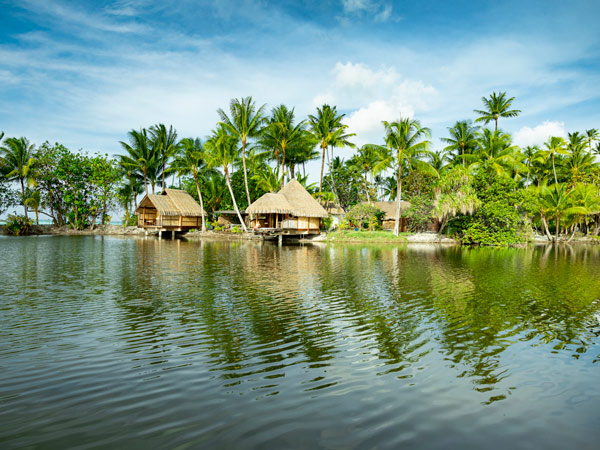
Le Taha’a by Pearl Resorts has overwater bungalows. (Image: Grégoire Le Bacon)
My partner and I check in to Pension Anahata, a passion project of Patricia Girard and her husband Heiarii, a construction company and lumberyard owner, who saw what others might consider an impossibly steep block and thought it would make the perfect spot for eight boutique huts with beautiful timber finishes.
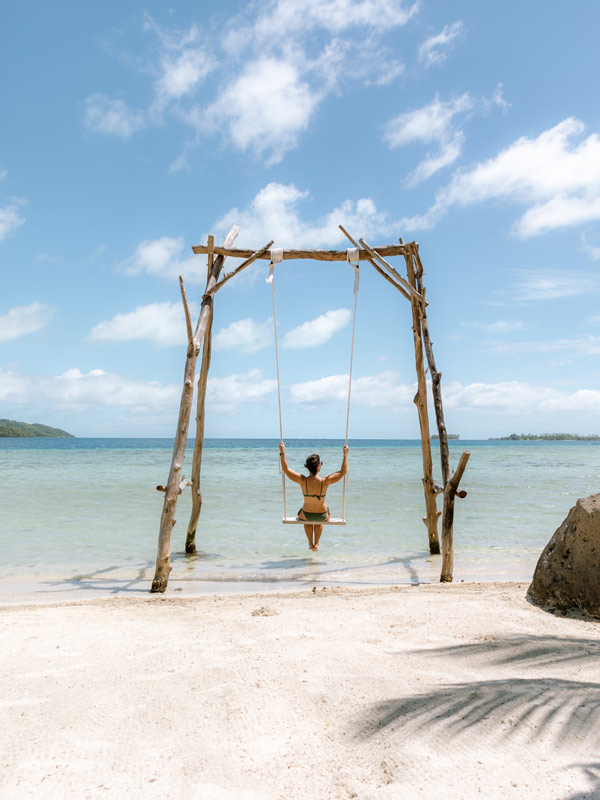
Pension Anahata is a passion project of Patricia Girard and her husband Heiarii. (Image: Marie Production)
Their bravery paid off as the hilltop restaurant (where guests enjoy a home-cooked breakfast and dinner) has 180-degree sea views, and our bungalow at the bottom of the hill let us step off the deck almost straight onto the sand.
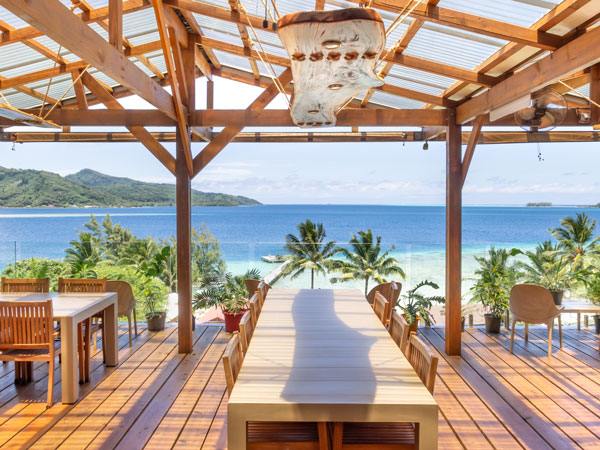
The hilltop restaurant has 180-degree sea views. (Image: Marie Production)
At sunset, we borrow a couple of rusted coastal cruisers and cycle past simple, rectangular houses painted in pastel colours – aqua, pink, yellow and green, with wide-open windows and floral curtains pinched at the waist. Many houses have a small plot of sugarcane and bananas nearby, and larger coconut plantations border the coastal road. We dodge giant crabs scuttling across the road and the odd chicken, and only pull over twice to let a car pass, otherwise enjoying the road to ourselves.
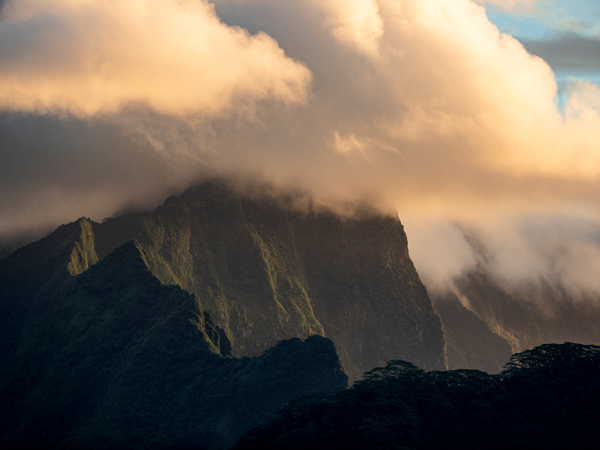
Explore the island at sunset. (Image: Emmanuel Bouvet)
Explore the lagoon: Manta rays and coral gardens
The following day, we’re picked up from Anahata’s private jetty by Tama Castagnoli, who was born in Tahiti and has lived on Taha’a for 26 years – drawn to the simplicity of life (we quickly realise that the island of Tahiti, French Polynesia’s administrative centre, is considered the ‘big smoke’ and is generally shunned by those living on other islands, who deem it too chaotic).
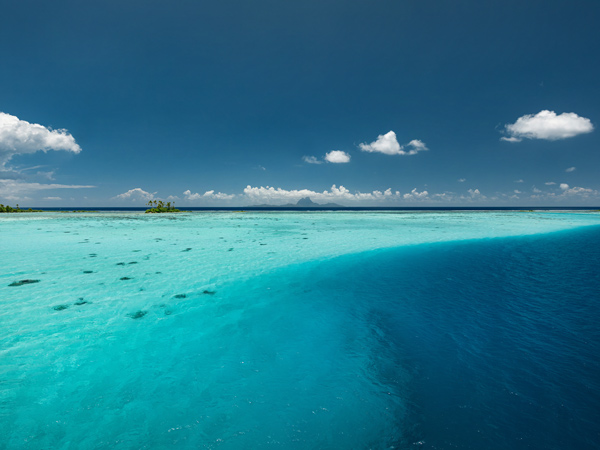
Locals on Taha’a are drawn to the simplicity of life.
“First, we’re going looking for manta rays,” Tama announces as he fiddles with the strings of a ukulele, white shirt unbuttoned to reveal a torso that’s clearly spent many hours in the sun.
After a short boat ride, we jump into the temperate sea with fins and snorkels on Tama’s cue. Sunlight streaks through the sapphire water and schools of silver fish dart past us as we scan for the gentle giants.
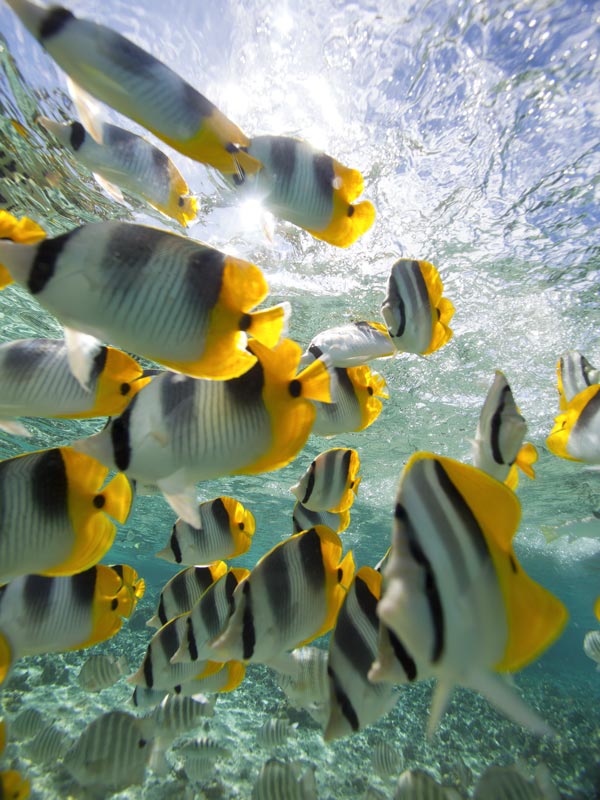
Schools of fish dart past as you snorkel.
Tama pops up and removes his mask. “Not here, come.” He waves us back to the boat and we try a second spot. Within two minutes, a monstrous manta ray with an almost five-metre wingspan glides over a coral ridge, soon followed by another. The majestic creatures nearly brush past us as they slowly flap their wing-like fins. I could have stayed all day, entranced by their graceful movements, but Tama is keen for us to see more of the local marine life, so we swim back to the boat.

Taha’a is teeming with marine life. (Image: Tahiti Tourisme and Grégoire Le Bacon)
Our tour then takes us to a coral garden teeming with fish, then a shallow sandbar teeming with black-tip sharks. They curiously swarm us, and we’re assured they’re friendly. Our tour ends on a private ‘motu’ – the term for a small island off the islands of Tahiti – where we have lunch and laze beneath the coconut trees, watching a trio of stingrays cruise up and down in the clear, shallow waters.
“It’s a good life here,” says Tama as our accommodation comes back into view. As we bump across the clear water with jungle-like mountains up ahead, and another friendly wave from a passing boat, it’s hard to disagree.
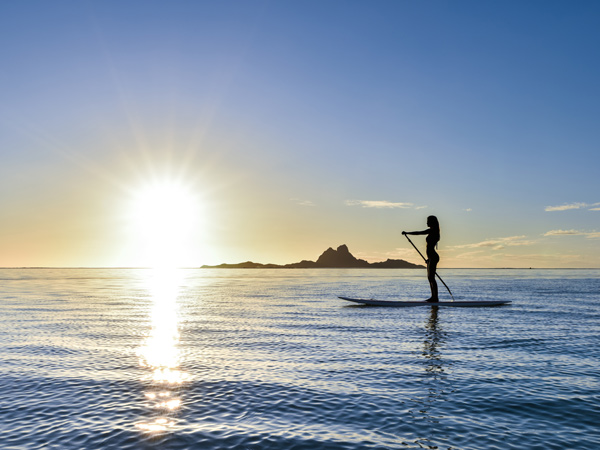
Life is good on Taha’a. (Image: Stephane Mailion Photography)
How to get to Taha’a
Air Tahiti Nui flies from Sydney and Melbourne to Tahiti’s capital, Papeete, via Auckland.
Air Tahiti then flies from Papeete to Ra’iātea and accommodation providers will usually arrange a boat transfer from Ra’iātea’s waterside airport to Taha’a.

Fly Air Tahiti to Taha’a.
Top tours on Taha’a
4×4 island safari: Explore Taha’a’s natural beauty and vanilla plantations with Taha’a Tour Excursion.
Lagoon tour: Discover marine life, coral gardens and motu islands with Terainui Tours.
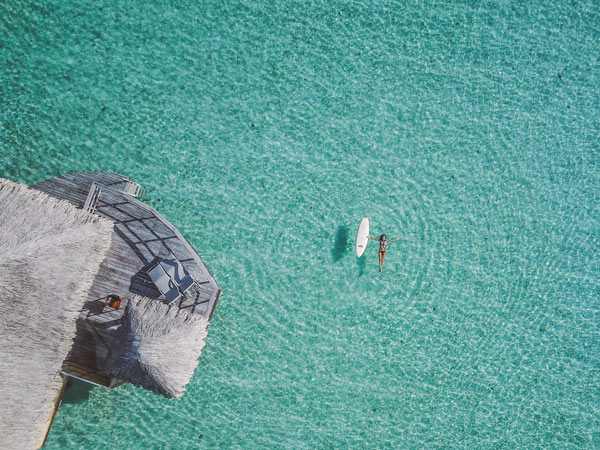
There is so much to be explored on Taha’a. (Image: Charlotte PIHO)


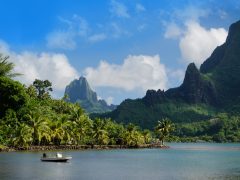

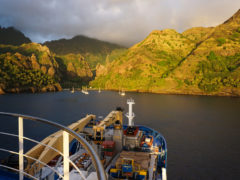
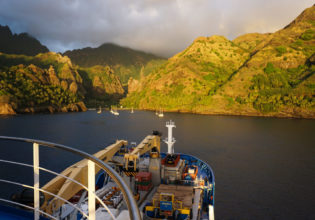
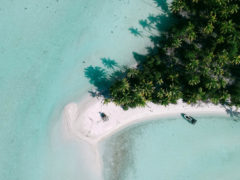
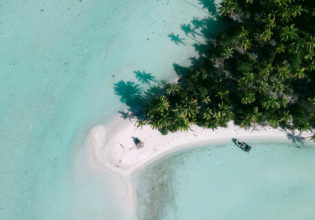
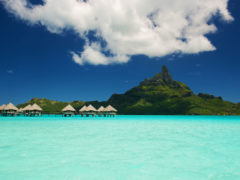
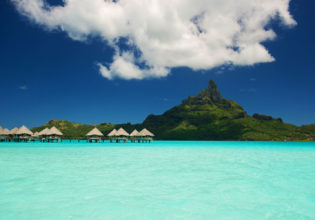
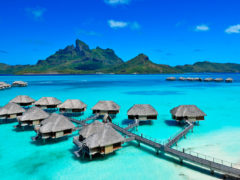
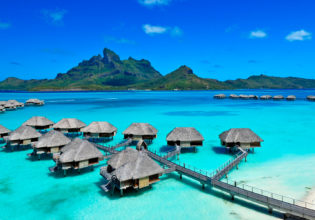


LEAVE YOUR COMMENT